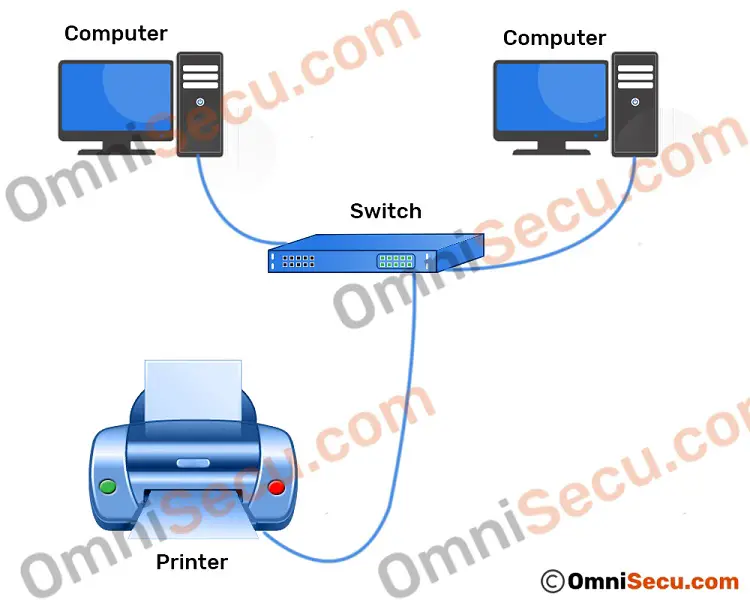Introduction to computer networking
The term computer network can be defined as "two or more computers which are connected together to share resources such as data, software, internet connection, printers, scanners etc."
Common devices used within a computer network are workstation computers (where users work), laptops, servers, printers, scanners, hand-held devices, fax machines etc.
The computers or computer like devices in a network can send and receive data, to or from another device inside the computer network. These devices are called as network hosts or network nodes. Network devices follow special rules called as network protocols to send and receive data over the network.
An example of a basic network is shown in below image. It has two computers and a printer connected together using a network infrastructure device, called network switch. By connecting the devices in a network, both the computers can share the printer.

Technologies are evolving so fast. Networking world has changed so fast in last 25 years. These days, networks with speed of 10 Gbps (Giga bits per second) are becoming common. The speed of 10 Gbps was not even imaginable 25 years back.
These days, even the smallest organization has a connection to the Internet. Almost all companies have websites and have their presence on the World Wide Web. Companies now operate on networks, get customers via internet and sell their products via internet. The beautiful world of computer networking is ever evolving.
Basic computer networking terms
To learn more about basic computer networking terms, please visit following links.
Why we need computer networks?
Client Operating Systems and Network Opeating Systems (NOS)
Local Area Networks (LAN) and Wide Area Networks (WAN)
Campus Area Networks (CAN) and Metropolitan Area Network (MAN)
Logical Classification of Computer Networks - Peer-to-Peer Networks and Client/Server Networks
Logical Classification of Computer Networks - Centralized and Distributed Computer Network Models
Internetworks, Internet, Intranet and Extranet